Understanding Technical Data Sheets for Oils
Most lubricant suppliers provide a Technical Data Sheet or Sales Brochure that list the typical physical characteristics and typical performance properties of their products. These typical properties provide results to various physical and chemical tests that are performed on the batch of product. A frequently asked question is “What does this result mean? Is it a good value or average?” Reading test results can be confusing. In certain tests, the higher the result, the better the performance. And in others, the lower the result, the better the performance. Let’s review some of the more common physical tests that are conducted on lubricants.
Viscosity is a critical physical property when working with oils. Viscosity is by definition “a measure of resistance to flow”. The higher the number, the more resistance. The correct viscosity is important to provide a suitable oil film and prevent metal to metal contact at normal operating temperatures. Too light or low of a viscosity will result in metal to metal contact, overheating, reduced oil and equipment life, and poor performance. Too viscous of an oil will also cause fluid drag, overheating, reduced fluid and equipment life, and poor performance. Viscosity is usually reported at 40°C (104°F) and 100°C (212°F) in centistokes(cSt). Multi-grade oils are reported and sold using the 100°C viscosity range because of the Viscosity Index Improvers (VII). Singe or ISO grades are reported and sold using the 40°C viscosity range.
Viscosity Index is a calculated determination of how much an oil viscosity will vary with temperature change.
The higher the number the less the change. 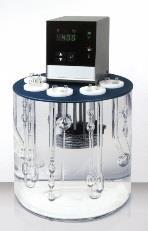
Pour Point is the lowest temperature the oil will pour. Brookfield Viscosity tests at low temperatures are used to determine pumpability and flow characteristics in motor oils. The lower the number, the better.FZG Gear Test is designed to simulate gear wear under load and heat. A gear set is weighed and inspected prior to assembly in the test apparatus. Each stage of testing has specific load, temperature and speed requirements. After each stage the gear set is removed, cleaned, weighed, and rated for damage. If it is acceptable, the oil continues to the next stage. The higher the number the better. Most premium gear oils pass a stage 12 or better. The current maximum is stage 14.

4 Ball Wear Test is one test method for predicting wear protection properties.
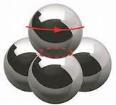 Three balls are locked in place with the lubricant, and the fourth ball is rotated at 1200 rpm under a 40 kg (88 lbs) load at 75°C (167°F) for one hour. The wear scars are then measured under a microscope and an average is reported in millimeters(mm). The smaller the number, the better and the greater the wear protection. The test specimens are ½ inch stainless steel balls with a Rockwell hardness of 56-58.
Three balls are locked in place with the lubricant, and the fourth ball is rotated at 1200 rpm under a 40 kg (88 lbs) load at 75°C (167°F) for one hour. The wear scars are then measured under a microscope and an average is reported in millimeters(mm). The smaller the number, the better and the greater the wear protection. The test specimens are ½ inch stainless steel balls with a Rockwell hardness of 56-58.
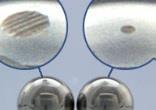
4 Ball Extreme Pressure (EP) Weld Test is a standard method for determining the load carrying properties of a lubricant. The test uses the same test specimens as the 4-Ball Wear Test and is performed at room temperature. The top ball is rotated at 1770 rpm for 10 seconds under a predetermined load and then the scars are measured under a microscope. The loads are gradually increased until the lubricant film ruptures and the balls physically weld together. The higher the weld load, the more pressure the lubricant can carry without metal to metal contact. The weld load is reported in kg (kilograms) or N (Newtons) and the higher the number, the better in extreme pressure characteristics. The 10 loads prior to the weld are used to calculate the LWI (Load Wear Index). This relates to how high of a load the lubricant will go prior to the welding without the lubricant film failing. Again, the higher the number, the better.
Copper Corrosion Test is where a polished copper strip is submersed in a lubricant for 3 hours at 100°C (212°F). The strip is cooled, cleaned and the tarnish on the test strip is compared to a standard and rated. A 1a is slight tarnish and the top rating, to a 4d which is black.
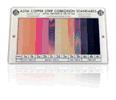
Timken Test was originally developed to test cutting oils. It has since been adapted for use with greases and gear oils. This test circulates 2 liters (0.52 gallons) of oil between a bearing race rotating at 800 rpm and steel block for ten minutes. A load arm holds the weights providing the pressure. A narrow scar less than 2mm (0.079 inches) with no scoring is a pass and reported as a pass at the number of pounds loaded. For example, “Passes 60 LBs (27kg) Timken” indicates a narrow clean scar carrying a 60 lbs (27 kg) load. This test has fallen out of favor in recent years due to lack of relevance to real world applications.
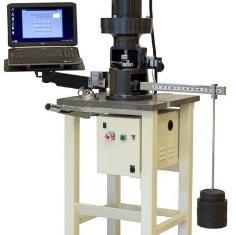
Demulsification Tests (ASTM D2711 and ASTM D1401) ASTM D 1401 is used for oils under 90 centistokes at 40°C (104°F) and the ASTM D 2711 is for oil above 90 centistokes at 40°C (104°F). In a graduated cylinder 40 milliliters (1.35 ounces) of water and 40 milliliters (1.35 ounces) of oil are mixed together at 120°F (49°C) for 5 minutes, then allowed to sit. The number minutes required for complete separation with less than 5 milliliter (0.17 ounce) cuff is reported. The fewer the minutes and the smaller the cuff is desirable. The “cuff” is the emulsified oil/water that takes extended periods of time to separate.

This is not a complete list of all oil test but covers most of the commonly used ones. Please contact us if you have any questions.
Source: SWEPCO®

